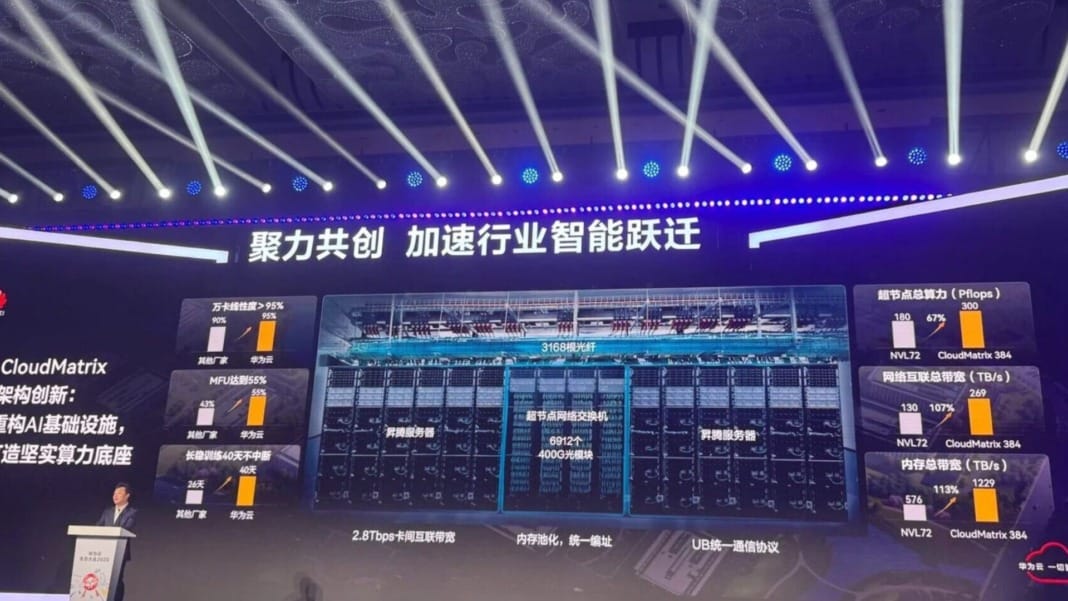You’re now seeing Huawei step up its game in AI hardware. Its new CloudMatrix 384 system, powered by Ascend chips, has outperformed Nvidia’s top AI processors in a major benchmark. This breakthrough, revealed in a joint technical paper by Huawei and SiliconFlow, shows the Chinese firm’s growing strength despite US tech bans.
CloudMatrix 384: Huawei’s powerful AI supernode
Huawei has built something special with CloudMatrix 384. It’s a high-performance AI system made for large and demanding tasks. At its core are 384 Ascend 910C NPUs and 192 Kunpeng CPUs, all linked by a high-speed data bus. This gives the system the power and speed needed for advanced AI models.
The company calls it an “AI supernode”, and it’s designed to replace the need for foreign chips. With CloudMatrix, Huawei wants to set a new standard for AI infrastructure, showing it can scale performance without the latest US hardware.
It outpaces Nvidia’s best with DeepSeek’s massive model
Huawei’s system was tested with DeepSeek’s R1 model, which has 671 billion parameters—making it one of the largest AI reasoning models in the world. Using its custom CloudMatrix-Infer solution, Huawei’s setup achieved significantly higher throughput and lower latency compared to systems powered by Nvidia’s widely used H800 GPUs.
This test result is a major achievement. Nvidia has long been seen as the global leader in AI hardware, with its chips powering everything from cloud AI to research labs. But Huawei’s new architecture doesn’t just compete—it outperforms Nvidia’s offering in this specific scenario. This proves that with the right system design, it’s possible to match or even exceed performance without relying on US-made chips.
The result also highlights how Huawei has focused on optimising every layer—from chip design to system integration—to unlock more power from its Ascend processors. While the Ascend chips may not match Nvidia’s raw specs individually, the strength of Huawei’s architecture lies in its ability to scale efficiently across a large number of processors working in sync.
Breaking free from tech restrictions
Why does this matter? The US government still restricts Huawei from accessing top-end chips like the Nvidia A100 or H100. By building an in-house solution that performs even better in certain tasks, Huawei shows it can overcome those barriers.
This shift also boosts China’s AI development goals. More firms in China need powerful tools for AI, and Huawei’s CloudMatrix system offers a home-grown alternative that meets world-class standards. In February 2025, Reuters reported that Huawei had integrated DeepSeek models into its Ascend-based cloud service, with performance matching that of leading global GPUs.





